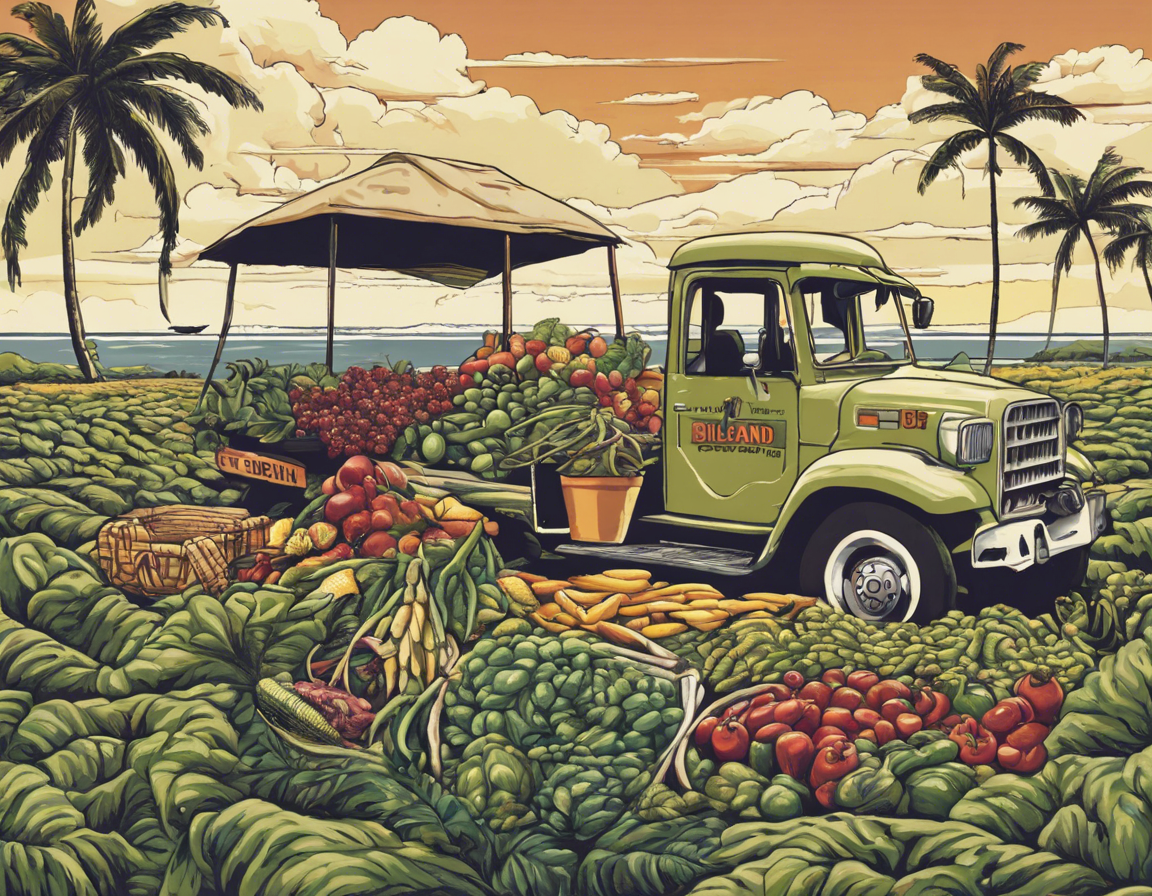When it comes to Hawaiian agriculture, the Big Island stands out as a powerhouse of diverse and sustainable farming practices. From rich volcanic soil to a variety of microclimates, the island provides an ideal setting for a wide range of crops to flourish. In this article, we will delve into the world of Big Island Grown produce, exploring the best agricultural practices, key crops, and innovative techniques that make this region a true agricultural gem.
The Big Island Agriculture Landscape
The Big Island of Hawaii offers a unique agricultural landscape characterized by a mix of traditional farming methods and cutting-edge technologies. The island’s rich volcanic soil, combined with ample rainfall and abundant sunshine, creates optimal conditions for cultivation. Additionally, the Big Island boasts a range of microclimates, from tropical rainforests to arid deserts, allowing farmers to grow an impressive array of crops.
Key Crops and Products
1. Kona Coffee
Kona coffee is perhaps one of the most famous agricultural products to come out of the Big Island. Grown on the fertile slopes of the Hualalai and Mauna Loa volcanoes, Kona coffee is known for its smooth flavor and rich aroma. The region’s unique climate and soil conditions contribute to the exceptional quality of this coffee, making it highly sought after by coffee connoisseurs around the world.
2. Macadamia Nuts
Another Big Island specialty is macadamia nuts. These creamy, buttery nuts are grown in orchards across the island, benefiting from the nutrient-rich soil and tropical climate. Hawaii is the second-largest producer of macadamia nuts globally, with the majority of production concentrated on the Big Island.
3. Tropical Fruits
The Big Island is also renowned for its tropical fruits, including papayas, pineapples, mangoes, and avocados. The island’s warm climate and ample rainfall create perfect conditions for these fruits to thrive, resulting in flavors that are unrivaled in freshness and sweetness.
4. Vanilla
Hawaii’s Big Island is home to a growing vanilla industry, with farmers cultivating high-quality vanilla beans in the island’s lush landscapes. The volcanic soil and humid conditions are particularly conducive to vanilla production, leading to a product that is highly prized for its fragrance and flavor.
Sustainable Farming Practices
Agricultural sustainability is a key focus for many Big Island farmers, who prioritize organic farming, permaculture, and agroforestry. These practices not only protect the island’s delicate ecosystem but also ensure the long-term viability of agriculture on the Big Island. By implementing sustainable farming methods, farmers can reduce their environmental impact, conserve natural resources, and support the local community.
Innovations in Agriculture
In recent years, the Big Island has seen a rise in agricultural innovations aimed at increasing productivity and sustainability. Hydroponics and vertical farming are gaining popularity, allowing farmers to grow crops more efficiently in limited spaces. Additionally, agrotech solutions, such as automated irrigation systems and drone technology, are being adopted to optimize farm operations and enhance crop yields.
Supporting Local Agriculture
Consumers can support Big Island agriculture by purchasing locally grown and sustainably produced products. Farmers’ markets, roadside stands, and farm-to-table restaurants are great places to find fresh, seasonal produce and support the local economy. By choosing Big Island Grown products, consumers can enjoy the flavors of Hawaii while contributing to the preservation of the island’s agricultural heritage.
FAQs:
1. What makes Big Island agriculture unique?
– The Big Island’s diverse microclimates, rich volcanic soil, and emphasis on sustainable farming practices set it apart as a hub of agricultural innovation and quality.
2. Which crops are most famous from the Big Island?
– Key crops include Kona coffee, macadamia nuts, tropical fruits, and vanilla, all of which benefit from the island’s ideal growing conditions.
3. How can consumers support Big Island agriculture?
– By purchasing locally grown and sustainable products, visiting farmers’ markets, and choosing farm-to-table restaurants, consumers can directly support Big Island agriculture.
4. What sustainable farming practices are prevalent on the Big Island?
– Organic farming, permaculture, and agroforestry are commonly practiced on the Big Island, promoting environmental conservation and community resilience.
5. Are there any agricultural innovations happening on the Big Island?
– Yes, the Big Island is embracing technologies such as hydroponics, vertical farming, and agrotech to improve efficiency, productivity, and sustainability in agriculture.
In conclusion, Big Island Grown agriculture embodies the spirit of innovation, sustainability, and quality that define Hawaii’s agricultural sector. From world-renowned crops to cutting-edge farming practices, the Big Island continues to be a beacon of excellence in the realm of agriculture. By supporting local farmers and embracing the bounty of the land, residents and visitors alike can experience the best that Hawaiian agriculture has to offer.
